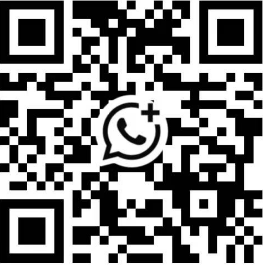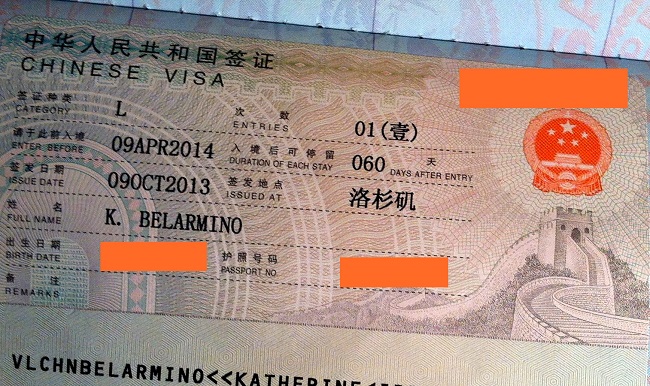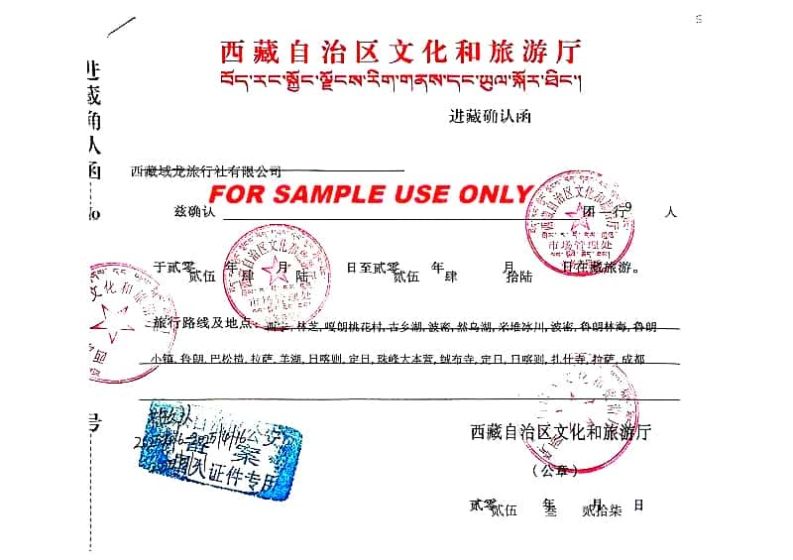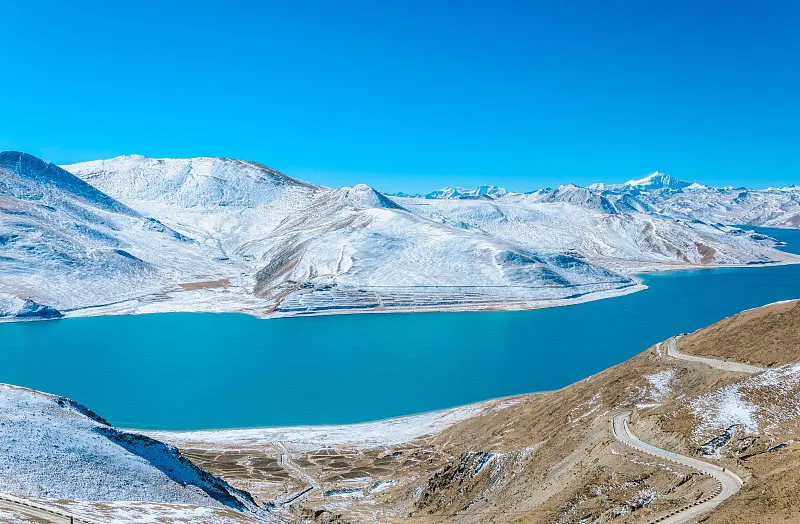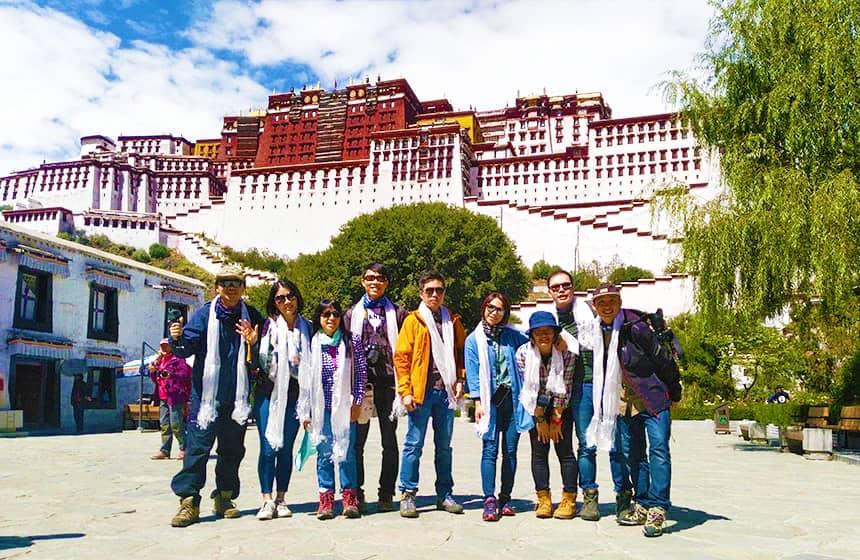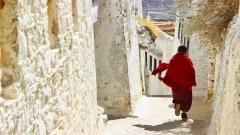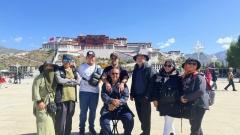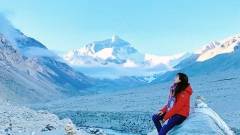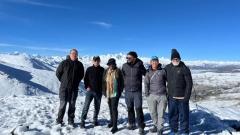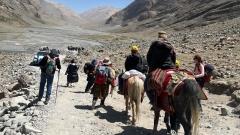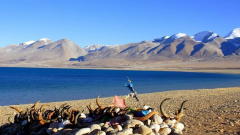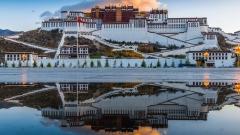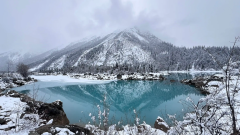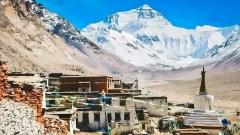If you’re wondering, “Can Americans go to Tibet?”, the answer is an enthusiastic yes. Tibet’s soaring Himalayan peaks, centuries-old monasteries, and rich Buddhist traditions have inspired explorers from every corner of the globe – especially Americans seeking adventure and cultural immersion. In fact, U.S. citizens rank among the largest overseas visitor groups to the Tibetan Autonomous Region. This comprehensive guide will walk you through every step – from securing the necessary permits to packing essentials – so you can plan a seamless, unforgettable journey to the “Roof of the World.”
What Permits and Paperwork Do Americans Need to Enter China and Tibet?
Before you can set foot in Tibet, you must first obtain two key authorizations:
-
Chinese Tourist Visa
- Application: Submit your U.S. passport (valid for at least six months with blank pages), visa form, a recent passport-style photo, and proof of round-trip flights and hotel bookings to the nearest Chinese embassy or consulate.
- Processing Time: Typically 4–7 business days, with expedited options at extra cost.
- Ten-Year Visa Note: If you already hold a 10-year multiple-entry Chinese visa, it remains valid—just beware that applying for a special group visa may void your long-term visa.
-
Tibet Travel Permit (TTP)
- Requirement: Mandatory for all foreign visitors, including Americans.
- How to Apply: You cannot apply in person; a licensed travel agency like China Dragon Travel submits your documents (passport copy and visa page) on your behalf.
- Processing Time & Cost: Around 10–15 working days and USD 50–100, depending on agency service levels.
Depending on your itinerary, you may also need:
- Ali (Ngari) Permit for western Tibet (Mount Kailash region)
- Military Permit for restricted zones (e.g., Everest Base Camp North Face)
Are Americans Truly Welcome in Tibet?
Absolutely. Tibetans are renowned for their warm hospitality and genuine curiosity about global visitors. You’ll experience this firsthand in simple yet meaningful ways:
- Traditional Greetings: Locals will often cheerfully call out “Tashi Delek” (good luck and blessings) and drape you with a white Khata – a ceremonial scarf symbolizing purity and compassion.
- Cultural Openness: Monasteries readily welcome respectful guests to observe prayer rituals, study intricate Thangka paintings, and join in daily kora (pilgrimage circuits).
- Modern Comforts: Thanks to recent infrastructure improvements, you can now travel by high-speed rail from Lhasa to Shigatse and Nyingchi, or fly into airports in Lhasa, Shigatse, and Nyingchi—making your trip both accessible and comfortable.
Why Do American Travelers Flock to Tibet’s Outdoor Adventures and Spiritual Journeys?
Americans are naturally drawn to Tibet’s epic landscapes and profound spiritual heritage. The region offers a spectrum of experiences:
- Everest Base Camp (North Side): Stand at 5,200 meters on the Tibetan side and behold Mount Everest’s majestic north face.
- Mount Kailash Kora: Embark on a three-day, 52-kilometer pilgrimage around the sacred Mount Kailash—an unparalleled spiritual quest for Buddhists, Hindus, Jains, and Bon worshippers alike.
- Lhasa Barkhor Circuit: Wander the 1.5-kilometer kora around Jokhang Temple, bustling with pilgrims, prayer wheels, and vibrant street stalls.
- Monastic Immersion: Visit Jokhang, Sera, and Drepung monasteries to witness monks’ animated debate sessions, age-old frescoes, and sacred rituals.
- Thangka Painting Workshops: Discover the artistry behind these detailed cloth paintings that depict deities, mandalas, and cosmological scenes.
- Meditation Retreats: Enroll in short retreat programs to learn mindfulness techniques and delve deeper into Tibetan Buddhist practices.
Can U.S. Passport Holders of Other Origins Visit Tibet the Same Way?
Yes. If you hold a U.S. passport – regardless of your country of birth – you follow identical visa and permit procedures. For example: An American citizen of Indian heritage submits the same documentation and pays the same fees as any other U.S. passport holder when applying for the Chinese visa and Tibet Travel Permit.
How Can Americans Get to Tibet from the USA?
Reaching Tibet involves two main legs:
Step 1: Fly to China
Choose from direct flights on U.S. west-coast airlines departing Los Angeles, San Francisco, Seattle, or Detroit to key Chinese gateway cities—Beijing (PEK), Shanghai (PVG), Guangzhou (CAN), or Chengdu (CTU).
Step 2: Travel to Lhasa
- By Air: Domestic flights from Chengdu, Beijing, Shanghai, Xining, and Chongqing land at Lhasa Gonggar Airport (LXA) daily.
- By Rail: The iconic Qinghai–Tibet Railway departs Xining, Yushu, Golmud, and Lanzhou—offering panoramic Plateau vistas and a gentle-paced acclimatization process.
Alternative Route via Nepal:
- If you hold a valid 10-year Chinese visa, consider flying Kathmandu (KTM) → Lhasa (LXA). Note that applying for a group visa in Kathmandu will cancel your multi-entry visa, so plan carefully.
When Is the Best Time of Year for American Travelers to Visit Tibet?
Tibet’s plateau climate features intense sunshine, low humidity, and striking temperature swings. Ideal travel windows include:
| Season | Key Features |
|---|---|
| April–May (Spring) | Blooming rhododendrons, mild daytime temps (10–20 °C), clear skies. |
| June–August (Summer) | Monsoon haze may reduce visibility; lively festivals like Saga Dawa. |
| September–October (Autumn) | Crisp air, peak foliage, daytime highs of 15–22 °C, perfect views. |
| November–March (Winter) | Cold and quiet; fewer tourists; budget-friendly; some passes closed. |
Top Picks: May, September, and October offer stable weather, excellent visibility, and comfortable trekking conditions—ideal for Mount Everest, Yamdrok Lake, and Kailash circuit tours.
How Should Americans Prepare for Altitude and Stay Safe on the Tibetan Plateau?
Altitude Acclimatization
Risk: Acute mountain sickness can strike above 3,000 meters (headache, nausea, dizziness).
Best Practices:
- Spend 1–2 days resting in Lhasa (3,650 m) before ascending higher.
- Stay well-hydrated and avoid alcohol.
- Consult your physician about prophylactic medication (e.g., acetazolamide).
Local Guide Support
- English-speaking guides from China Dragon Travel handle logistics, secure permits, and optimize your itinerary for gentle altitude gains.
- In emergencies, guides coordinate medical care and evacuation.
- They enrich your journey with cultural insights at monasteries, villages, and heritage sites.
What Cultural Etiquette Must American Visitors Observe in Tibet?
Respect and mindfulness are paramount when exploring Tibet’s spiritual landscapes:
- Dress Code: Shoulders and knees covered, especially inside temples.
- Photography: Always request permission before photographing monks, pilgrims, or sacred objects.
- Monastery Protocol:
- Circumambulate (walk clockwise) around stupas and temples.
- Refrain from touching objects of worship.
- Keep voices low and disable camera flashes.
- Gifts & Offerings: Present white Khatas or small donations at monasteries.
- Environmental Stewardship: Carry out all trash; minimize single-use plastics.
What Should Americans Pack for a High-Altitude Tibetan Adventure?
- Clothing Layers: Thermal base layers, fleece mid-layers, windproof outer shell, and a down jacket.
- Sun Protection: High-SPF sunscreen, UV-blocking sunglasses, and a wide-brimmed hat.
- Footwear: Well-broken-in hiking boots plus comfortable walking shoes for Lhasa.
- First-Aid Kit: Altitude-sickness medicine, pain relievers, motion-sickness pills, and any personal prescriptions.
- Gear: Reusable water bottle (with filter or purification tablets), headlamp, portable power bank, and travel insurance details.
What Might a Sample 10-Day Tibet Itinerary Look Like for American Visitors?
- Chengdu Arrival
- Chengdu — Xining (Morning Flight) — Tibet (Qinghai-Tibet Railway Soft Sleeper)
- Lhasa Arrival
- Downtown Lhasa: Potala Palace — Jokhang Temple — Barkhor Street
- Lhasa — Yamdrok Lake — Karola Glacier — Shigatse
- Shigatse — Tingri — E.B.C.
- E.B.C. — Tingri — Shigatse
- Shigatse — Tashilhunpo Monastery — Lhasa
- Lhasa — Namtso Lake — Northern Tibet Grassland — Lhasa
- Lhasa Departure
Embark on a life-changing odyssey across Tibet’s ethereal plateau with China Dragon Travel, the trusted agency that helped over 3,000 U.S. travelers fulfill their Tibetan dreams in 2024 alone. From securing visas and permits to arranging expert English-speaking guides, comfortable accommodations, and bespoke routes, we handle every detail so you can focus on absorbing the sacred rhythms of this ancient land. Contact China Dragon Travel today and take the first step toward the Tibetan adventure of a lifetime.


